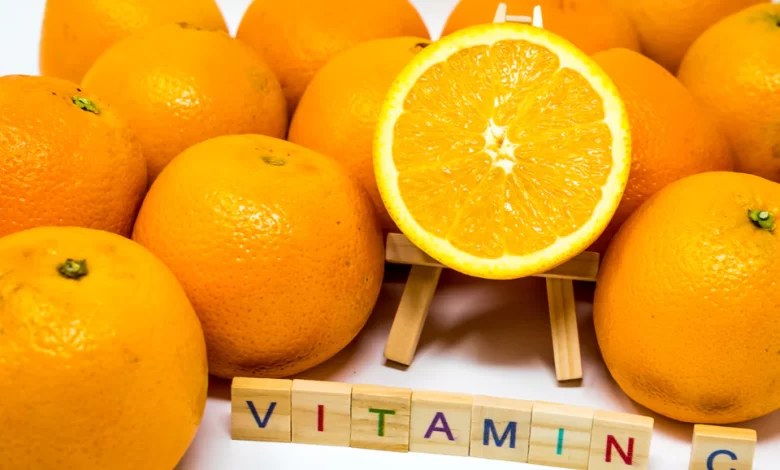What Type of Vitamin C Is Best for You? Experts Finally Reveal the Answer

Vitamin C is one of the most talked-about nutrients in health circles — for good reason. It supports immune function, helps form collagen, acts as an antioxidant, and plays a role in iron absorption. But when you walk down the supplement aisle (or shop online), you’ll meet dozens of types: ascorbic acid, buffered forms like calcium ascorbate, sodium ascorbate, Ester-C®, ascorbyl palmitate, and newer options such as liposomal vitamin C. Which one should you choose? Short answer: it depends on your goals, stomach sensitivity and budget. Below, experts and the best available evidence explain the differences and point you to the smartest choice for your needs.
The core truth: chemically, vitamin C is vitamin C
First, a quick baseline: when people talk about “vitamin C,” they usually mean L-ascorbic acid — the active form the body uses. Most supplements contain that molecule, or a salt of it (for example, calcium ascorbate or sodium ascorbate). Because humans cannot synthesise vitamin C, we must obtain it from food or supplements. Public health bodies (including the US National Institutes of Health and the UK’s NHS) emphasise that for most adults the nutritional need can be met through normal diet, but supplements are useful when intake is low or needs rise.
So: the form of vitamin C you buy rarely changes the basic molecule your cells receive. Where supplements differ is in acidity, tolerability, bioavailability (how much gets into the bloodstream and tissues), and how long the vitamin remains in the body.
Common forms explained — pros and cons
1. Ascorbic acid (regular vitamin C)
This is the classic, inexpensive form. It’s acidic, well-studied, and effective at delivering vitamin C into the bloodstream. Doses above about 1,000 mg per day may cause stomach upset or diarrhoea in some people. If you tolerate citrus and acidic foods fine, standard ascorbic acid is usually the most cost-effective option.
2. Buffered forms: calcium ascorbate, sodium ascorbate, potassium ascorbate
Buffered or “mineral ascorbates” pair ascorbic acid with a mineral (calcium, sodium, potassium) to reduce acidity. People with sensitive stomachs often prefer these because they are gentler. They supply the same amount of ascorbate molecules but in a less acidic vehicle. Some small studies suggest pharmacokinetic differences — for example, calcium ascorbate may show slightly different blood levels or retention — but the practical benefits for most healthy people remain modest.
3. Ester-C® and similar branded mixes
Ester-C® is primarily calcium ascorbate plus small amounts of vitamin C metabolites. Manufacturers claim better absorption and longer retention; independent analyses show mixed results. Some early and small human studies reported marginally improved tissue retention, while larger decisive evidence is limited. For people who literally can’t tolerate ascorbic acid, Ester-C® can be a reasonable alternative — but it’s usually more expensive and not necessarily markedly “better” for everyone.
4. Liposomal vitamin C
Liposomal formulations encase vitamin C inside tiny fat-like vesicles (liposomes). The theory is that these vesicles shield vitamin C from degradation and may promote absorption across intestinal cells, raising blood and tissue levels more efficiently than plain ascorbic acid. Recent systematic reviews and studies indicate that liposomal vitamin C often produces higher plasma concentrations and improved retention compared with non-liposomal forms, although study methods and dose ranges vary. Liposomal products tend to be pricier and quality varies between brands. If you need higher blood levels (for example, in certain clinical or therapeutic scenarios), liposomal forms may be preferable — but for everyday prevention, they’re usually overkill.
5. Ascorbyl palmitate and fat-soluble derivatives
Ascorbyl palmitate is a fat-soluble vitamin C derivative sometimes used in skincare or foods. It behaves differently and is not a direct substitute for water-soluble vitamin C in the diet. Use it where indicated (for topical antioxidant protection), not as your go-to oral supplement.
What does “better absorption” really mean?
When manufacturers talk about “better absorption,” they usually mean one of two things: a higher peak concentration in the blood after a dose, or a greater area under the curve (AUC), which reflects total exposure over time. Some forms (especially liposomal C) show improved peak levels or slower clearance in short pharmacokinetic studies. But improved blood numbers do not automatically translate to better health outcomes for everyone.
For the average person seeking to avoid deficiency or support immune health, regular ascorbic acid at modest daily doses (for example, 100–500 mg per day) achieves blood levels adequate for those purposes. High-end formulations may matter if a clinician aims to achieve higher plasma concentrations for therapeutic reasons, but those scenarios are specific and should be supervised.
Who might prefer which form? Practical guidance
Use the simple matrix below to decide:
- You want the cheapest, proven option: standard ascorbic acid tablets or powdered C. Good for normal daily maintenance.
- You have sensitive stomach or reflux: try buffered forms (calcium or sodium ascorbate) or Ester-C®. They’re gentler on gastric lining.
- You need higher plasma levels (on medical advice): consider liposomal vitamin C — it can give higher blood concentrations but costs more. Use reliable brands and watch dosing.
- You want topical antioxidant support for skin: look at ascorbyl palmitate or vitamin C serums formulated for skin penetration. These are different products than oral C.
Dosage: what experts commonly recommend
Public health bodies set recommended intakes to avoid deficiency: in the UK, adults usually need about 40 mg per day; other guidelines differ slightly but fall in the tens of milligrams. Many supplement users take 100–500 mg daily; some take 1,000 mg or more during illness. The trade-off: larger oral doses increase urinary excretion and the chance of gastrointestinal side effects, with diminishing returns once blood levels reach saturation. The NHS cautions that doses above about 1,000 mg/day can cause stomach pain and diarrhoea. If you have particular medical conditions or take medications, discuss doses with your clinician.
Safety and interactions
Vitamin C is water-soluble and excess is largely excreted in urine, but this doesn’t mean unlimited doses are harmless. Key safety notes:
- High doses (above ~1,000 mg daily) may cause abdominal discomfort, diarrhoea, or kidney stone risk in susceptible individuals. The NHS flags gastrointestinal symptoms at high intakes.
- If you have a history of oxalate kidney stones, discuss vitamin C with your doctor — large doses can increase oxalate production in some people.
- Vitamin C increases iron absorption; this helps people with iron deficiency, but people with conditions that cause iron overload (like haemochromatosis) should be cautious.
Quality matters — how to pick a reliable product
Supplements are not regulated like medicines in many countries, so quality varies. Look for products that:
- Are made by reputable brands with transparent manufacturing (GMP certified).
- Provide third-party testing or certificates of analysis (COA).
- Clearly list the form of vitamin C (ascorbic acid, calcium ascorbate, liposomal, etc.).
- Avoid extravagant health claims. If a product promises to “cure” disease, that’s a red flag.
For liposomal forms, check if the manufacturer provides pharmacokinetic data or independent testing to support absorption claims. For branded forms like Ester-C®, independent evidence is mixed — the product is generally safe, but not a magic bullet.
Real-world examples — when clinicians choose different forms
- Routine deficiency prevention: clinicians typically recommend dietary change first; a standard ascorbic acid supplement suffices when needed.
- Gastric sensitivity or reflux: buffered ascorbates or Ester-C® often replace ascorbic acid for tolerability.
- Higher plasma targets in clinical settings: liposomal vitamin C may be selected if higher tissue exposure is desired (sometimes in research or specific therapeutic protocols), but such choices are usually patient-specific and supervised.
Cost vs benefit — are premium forms worth it?
The premium question: are liposomal or proprietary forms worth the extra money for everyday use? For most healthy people taking modest daily doses to prevent deficiency, the evidence does not clearly justify the extra cost. Standard ascorbic acid or buffered mineral ascorbates should meet needs. Liposomal vitamin C shows promising pharmacokinetics, but improved blood numbers don’t automatically mean better clinical outcomes for healthy individuals. Reserve premium products for specific, evidence-based indications or when a clinician recommends them.
Practical tips — how to take vitamin C effectively
- Spread larger oral doses across the day (for example, two 500 mg doses) rather than taking one massive dose; this can reduce digestive side effects and keep blood levels steadier.
- Pair vitamin C with iron-rich plant foods if you need to improve iron absorption (vitamin C converts iron into a more absorbable form).
- If you have stomach sensitivity, try buffered forms or take the dose with a meal.
Final verdict: which type is “best”?
There is no single “best” vitamin C for everyone. Here’s the bottom line:
- If you want value and proven effect: choose ascorbic acid — cheap, effective and backed by decades of research.
- If you have stomach issues or prefer a gentler option: choose buffered ascorbates (calcium/sodium) or Ester-C®.
- If you need higher blood levels and are prepared to pay: consider liposomal vitamin C, ideally under professional guidance and from a reputable brand.




